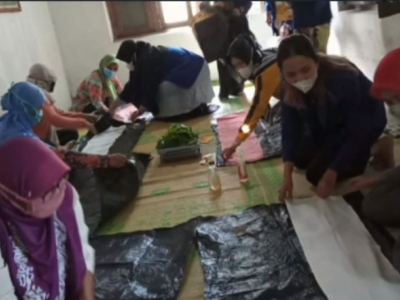Learning How to Make Stylish Ecoprint Scarf

Applying the ecoprint technique to fabrics can produce a pattern of distinctive shapes and colors according to the natural materials used. We can create patterns and textures very similar to the original with the proper methods. The colors that emerge from this coloring process are usually natural and soft. In the long term, the ecoprint technique is claimed to be more environmentally friendly when compared to conventional coloring techniques. This point is what prompted Rohmah Hasanatun Robbani, a student of fashion education at the Faculty of Engineering, UNY, to hold a training on making stylish print ecoprint scarves in Wijirejo village, Bantul Regency.
"I hope this training can increase the interest and talent of the villagers in utilizing the natural materials that are around. Hopefully, this training can also open up business opportunities for the community," she said on June 30, 2022.
In this training, Rohmah used several materials: spongy cloth, trash bags, various kinds of leaves such as Cosmos leaves, teak leaves or cherry leaves, secang wood and alum. At the initial stage, the cloth must go through a mordanting process to receive the dye well. Creativity is the key to forming patterns on fabrics. Rohmah chose to teach making patterns using leaves. The leaves are placed on a cloth, covered with a trash bag, and then rolled up. These rolls are then tied and then steamed for 2 hours. After the cloth is dried, the resulting color is fixed by soaking it with alum water. After curling, the fabric is ready to be used as a stylish scarf.
"I am happy with this training. This training is very useful because it can provide income opportunities by not leaving home," said Juleha, one of the training participants. (Dedy, Tj. Lak)

